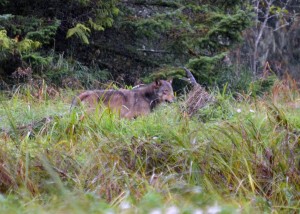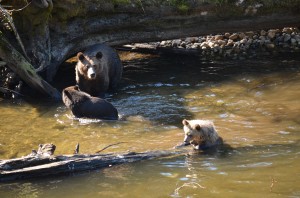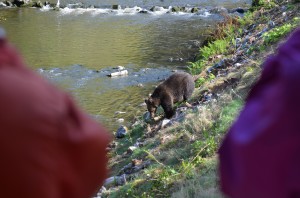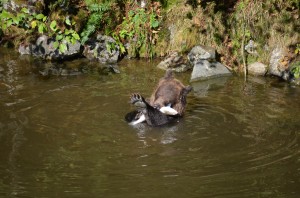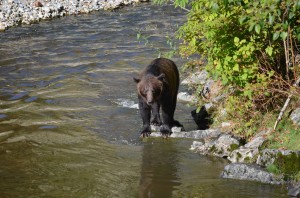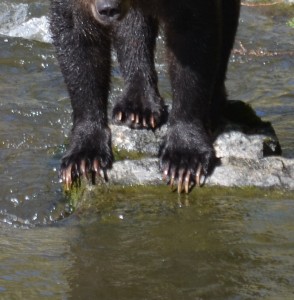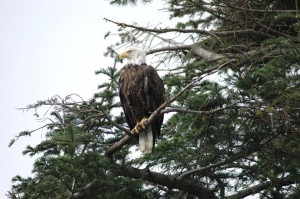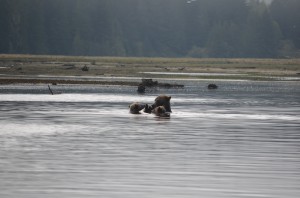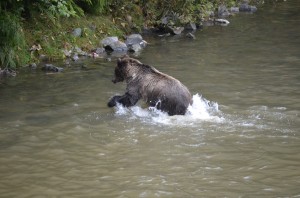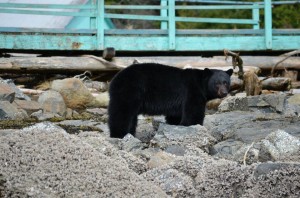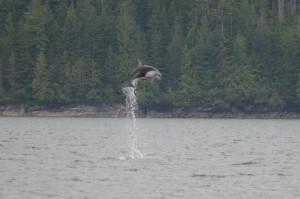
Great photo of a pod of pacific white-side dolphins which frequent the waters of British Columbia’s coast. The average pod size for pacific white-sided dolphins is 10-100, but they can be found gathered in pods of thousands of individuals. These dolphins commonly leap (breach) and somersault and may also ride the bow and stern waves created by boats. This photo shows the dolphins surging forward as a pod as they search for food (herring) along the shore. While engaged in this activity they travel at about nine miles an hour but have clocked speeds of up to 25 miles per hour.
